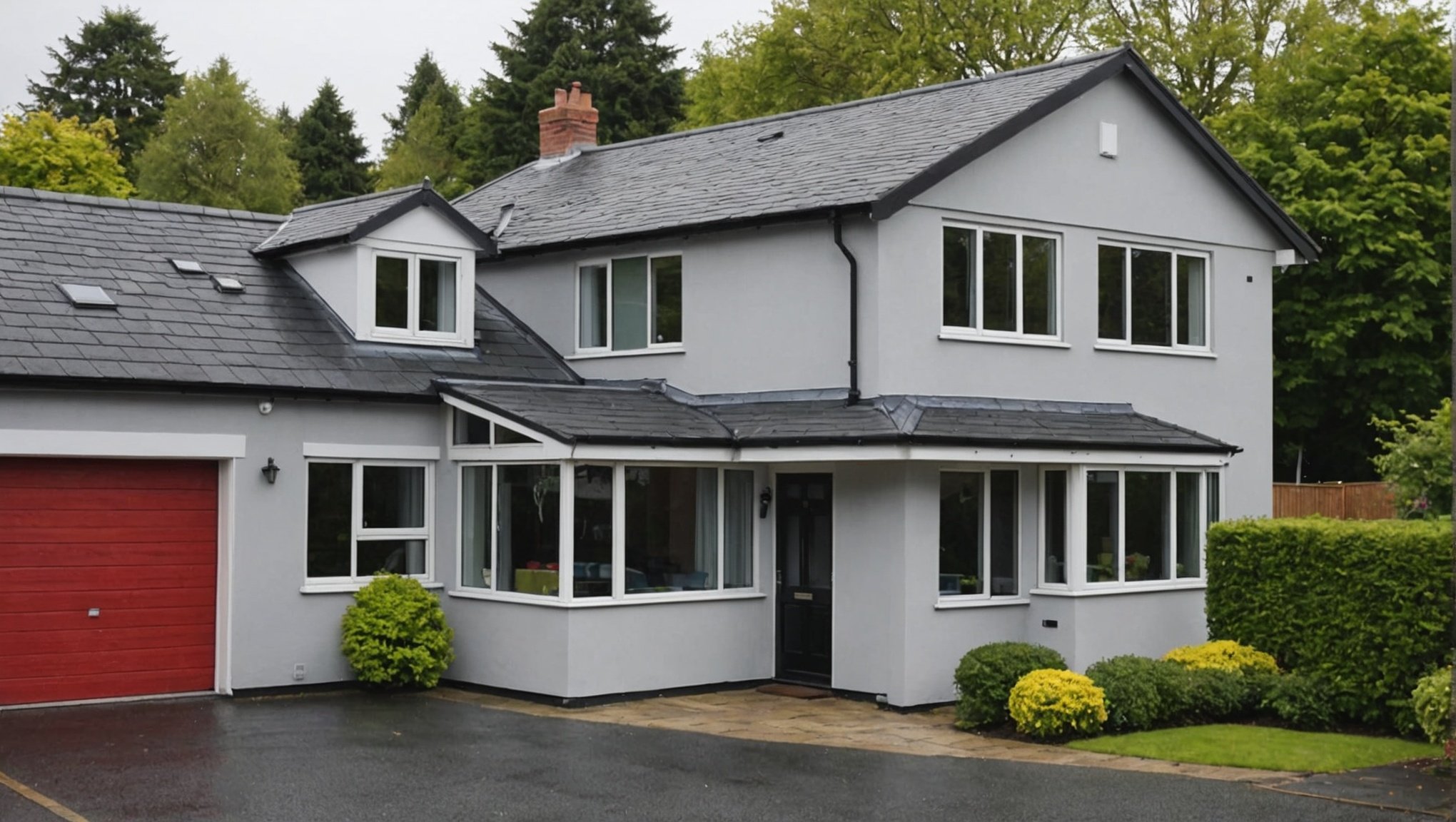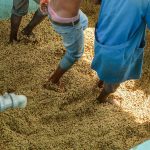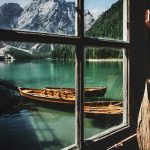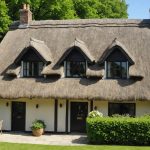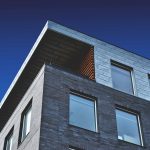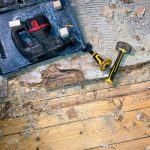Lancashire's rainy climate demands more than just any exterior paint; it requires a strategic choice that combines durability and weather resistance. With relentless showers and shifts in temperature, selecting the right paint can protect your home while enhancing its aesthetic appeal. This guide will highlight essential considerations and options to ensure your exterior finishes withstand the elements, keeping your property looking its best year-round. Prepare to discover how the right paint can make a significant difference in maintaining your home’s charm against Lancashire’s persistent drizzle.
Understanding the Challenges of Lancashire's Rainy Climate
Lancashire is known for its rainy climate, which presents unique challenges for homeowners, particularly concerning exterior surfaces. The region experiences frequent rainfall and high humidity, which can significantly impact the durability of exterior paint. Moisture and constant exposure to rain can cause paint to peel, crack, or fade, leading to unsightly exteriors and costly repairs.
A lire en complément : Discover the Advantages of Triple-Glazed Windows for Your Home in Edinburgh
Homeowners in Lancashire often face issues such as mould growth, wood rot, and structural damage due to prolonged exposure to rain. These problems can compromise the integrity of a home’s exterior, making it crucial to address them proactively. Selecting the right paint is essential for ensuring longevity and protecting against the harsh weather conditions.
When choosing exterior paint for Lancashire's weather, it is important to consider products specifically designed to withstand moisture and resist environmental wear. High-quality paints with water-repellent properties can help maintain the appearance and durability of a home’s exterior. Additionally, opting for paints with UV protection can prevent fading caused by exposure to sunlight, which is still a concern despite the frequent rain.
Lire également : Creating an Effective Home Recycling System for Your Manchester Apartment: A Step-by-Step Guide
By understanding the rainy climate challenges of Lancashire, homeowners can make informed decisions to protect their homes and maintain their curb appeal.
Types of Exterior Paint Suitable for Rainy Climates
Navigating the world of exterior paint types can be daunting, especially in regions with challenging weather like Lancashire. Understanding the differences between acrylic and oil-based paints is crucial. Acrylic paints are water-based, offering flexibility and resistance to cracking, making them ideal for fluctuating temperatures. They dry quickly and are less prone to mildew growth, a common issue in humid climates.
In contrast, oil-based paints provide a durable, glossy finish and superior adhesion, which can be beneficial for surfaces exposed to constant moisture. However, they take longer to dry and may yellow over time.
For those facing persistent rain, specialty paints designed specifically for moisture resistance are invaluable. These paints often incorporate advanced paint formulations that include water-repellent properties, ensuring longevity and maintaining aesthetic appeal.
Furthermore, the role of additives in enhancing paint durability cannot be overstated. Additives such as mildewcides and UV blockers can significantly extend the lifespan of exterior paints. These components help protect against mould, fading, and other weather-induced damages, making them a wise investment for homeowners in rainy regions. Understanding these options allows for informed decisions, ensuring homes remain protected and visually appealing.
Evaluating Paint Durability and Weather Resistance
When assessing paint durability for Lancashire's rainy climate, several factors come into play. The weather resistance of a paint is crucial, as it determines how well it can withstand moisture and temperature fluctuations. Paints specifically formulated for wet conditions often include ingredients that enhance their durability against the elements.
Understanding performance ratings is key when selecting exterior paint. These ratings provide insights into how a paint performs under various conditions, including resistance to cracking, peeling, and fading. Certifications from reputable organizations can further assure homeowners of a paint's quality and suitability for weather resistance.
The brand reputation is another critical aspect to consider. Brands with a history of producing reliable and high-performing paints often receive positive user reviews, which can be a valuable resource for homeowners. Reviews can highlight real-world experiences, offering practical insights into a paint's longevity and effectiveness.
In summary, evaluating the durability and weather resistance of exterior paints involves considering performance ratings, certifications, and brand reputation. By doing so, homeowners can make informed decisions, ensuring their homes remain protected and visually appealing despite Lancashire's challenging climate.
Recommended Finishes for Maximum Protection
Choosing the right paint finishes is crucial for ensuring maximum protection in Lancashire's rainy climate. The finish not only affects the appearance but also the moisture repellent properties of the paint.
Differences Between Finishes
- Matte finish: Offers a non-reflective surface, ideal for concealing imperfections. However, it may be less effective in repelling moisture compared to glossier options.
- Satin finish: Provides a subtle sheen and balances durability with aesthetic appeal. It is more moisture-resistant than matte, making it suitable for exterior surfaces exposed to rain.
- Gloss finish: Known for its high shine and excellent moisture-repelling capabilities. This finish is particularly effective in protecting against water penetration and is easy to clean, making it a top choice for areas with heavy rainfall.
Protective Coatings
To enhance durability, consider applying protective coatings over the chosen finish. These coatings can include water-repellent sealants or UV-blocking layers, further safeguarding the paint from environmental damage. Opting for a protective topcoat not only extends the lifespan of the paint but also maintains its visual appeal, ensuring your home remains protected and attractive despite the challenging weather conditions.
Color Recommendations for Rainy Environments
When selecting exterior colors for Lancashire's rainy climate, it's essential to prioritise color durability and aesthetic appeal. Opting for lighter shades can be beneficial, as they tend to reflect sunlight and heat, reducing surface temperature and preventing premature fading. Pastels and soft neutrals are excellent choices, offering a timeless look while ensuring longevity in damp conditions.
Darker colors, while visually striking, may absorb more heat, potentially leading to faster deterioration of the paint. However, if coordinated with local architectural styles, they can enhance a home's character. Consider using darker shades for accents or trims to maintain a cohesive aesthetic without compromising durability.
Incorporating color selection that complements the natural surroundings and existing structures can elevate a property's curb appeal. For instance, earthy tones or muted greens can harmonise with Lancashire's lush landscapes, creating a seamless blend with the environment.
Ultimately, the key is to balance color durability with the desired look, ensuring the exterior remains attractive and resilient against the region's wet climate. By carefully choosing colors that suit both the weather and local architecture, homeowners can achieve a harmonious and long-lasting appearance.
Maintenance Tips for Exterior Paint in Wet Conditions
Maintaining exterior paint in Lancashire's rainy climate requires strategic paint maintenance and proactive measures. Regular upkeep can significantly extend the life of your paint, ensuring your home remains protected and visually appealing.
Begin with frequent inspections to identify early signs of wear, such as peeling or cracking. Addressing these issues promptly can prevent more extensive damage. Upkeep strategies should include cleaning surfaces to remove dirt and debris, which can trap moisture and accelerate deterioration.
Mold prevention is crucial in wet conditions. Mold and mildew thrive in damp environments, so ensure proper drainage around your home to reduce moisture accumulation. Regularly clean painted surfaces with a mild detergent solution to eliminate mold spores and prevent growth.
Consider applying a mold-resistant sealant or coating to further protect your paint. These products create a barrier that inhibits mold development, preserving the integrity and appearance of your exterior surfaces.
Repainting might be necessary if damage is extensive. Choose high-quality paints with moisture-resistant properties to withstand Lancashire's challenging weather. By implementing these paint maintenance practices, homeowners can effectively safeguard their homes against the elements, ensuring longevity and enduring beauty.
Cost Considerations for Exterior Painting Projects
When planning an exterior painting project in Lancashire's rainy climate, understanding the paint costs and overall budgeting is crucial. Different paint types come with varying price tags. For instance, specialty paints designed for moisture resistance might be more expensive upfront but offer long-term savings due to their durability and reduced need for maintenance.
Budgeting for an exterior painting project involves more than just the cost of paint. Labour costs can significantly impact your budget. Hiring professionals ensures a high-quality finish and may include warranties, but it can be costly. Alternatively, opting for a DIY approach can save money on labour but requires time, effort, and some level of skill to achieve professional results.
To get the best value for money, consider the lifespan and maintenance needs of the paint. High-quality, durable paints might cost more initially but can prevent frequent repaints and repairs, ultimately saving money over time. It's important to weigh these factors when budgeting for your project to ensure both financial efficiency and long-lasting protection for your home.
Expert Advice and Recommendations
Gaining insights from expert opinions and professional painters in Lancashire can be invaluable when tackling exterior painting projects in this rainy region. Local painting professionals often recommend using high-quality, moisture-resistant paints specifically designed for wet climates. These experts emphasise the importance of selecting paints with strong adhesive properties to withstand constant exposure to rain and humidity.
Case studies of successful exterior painting projects in Lancashire highlight the effectiveness of using specialised products. For instance, one local homeowner shared their experience with a professional painter who recommended a water-repellent acrylic paint. This choice resulted in a durable and visually appealing finish that withstood the region's challenging weather conditions for several years.
Testimonials from homeowners further underscore the benefits of consulting with professional painters. Many have reported significant improvements in their home's exterior appearance and durability after following expert advice. One homeowner noted that their decision to invest in a high-quality, UV-protected paint, as recommended by a local expert, not only enhanced their home's curb appeal but also reduced maintenance costs over time.
By considering these expert opinions and learning from the experiences of others, homeowners can make informed decisions, ensuring their properties remain protected and attractive despite Lancashire's rainy climate.
Product Comparisons and Reviews
Selecting the right exterior paint for Lancashire's rainy climate can be challenging. To aid in this decision, a side-by-side comparison of top-rated paints is essential. Brands such as Dulux, Sherwin-Williams, and Behr frequently feature in paint product reviews due to their durability and moisture resistance. Dulux Weathershield, for instance, is praised for its water-repellent properties and resistance to mould growth. Meanwhile, Sherwin-Williams' Duration offers excellent UV protection, making it a strong contender despite the frequent rain.
Consumer feedback is invaluable for understanding real-world performance. Many homeowners report satisfaction with Behr's Premium Plus Ultra for its cost-effectiveness and ease of application. Users appreciate its ability to maintain colour vibrancy over time, even in wet conditions.
Brand comparisons highlight the unique strengths of each product. Dulux is often recommended for its superior finish and long-lasting protection. In contrast, Behr is favoured for affordability without compromising on quality.
Ultimately, recommendations hinge on balancing performance and cost-effectiveness. For those prioritising longevity and minimal maintenance, investing in a premium brand like Sherwin-Williams may be worthwhile. However, for budget-conscious consumers, Behr offers a reliable option that doesn't sacrifice quality.

